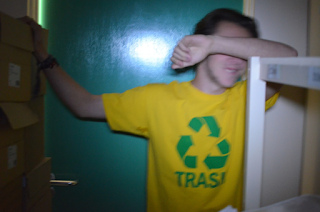Lighting
practice
We have been practicing a variety
of shots with different lighting to create a specific effect on the viewer.
There are a range of techniques that can be used to portray a character to be a
protagonist, antagonist, or merely just a sinister persona.
Backlight
For this
effect we used a torch to give off a direct beam of light towards the subject.
This helps to darken out the rest of the scene and encourage the audience to
focus on where the light is. This is often used in horror films when someone is
in a poorly lit house or factory then a beam from a torch decides what the
audience will see and where they will look. The fact of the audience having no
control or what they must see creates suspense and fear as to what may happen
next.
Close
lighting
This
technique involves using two different intensities of light to show both the
focus character and a particular scene occurring in the background but with
less focus. Here we have a bright, artificial light at the front aimed towards
the main character to show focus on them but with a slightly darker light in
the background on the other two characters to show that they still have
involvement but may be a slightly less important role in the scene.




